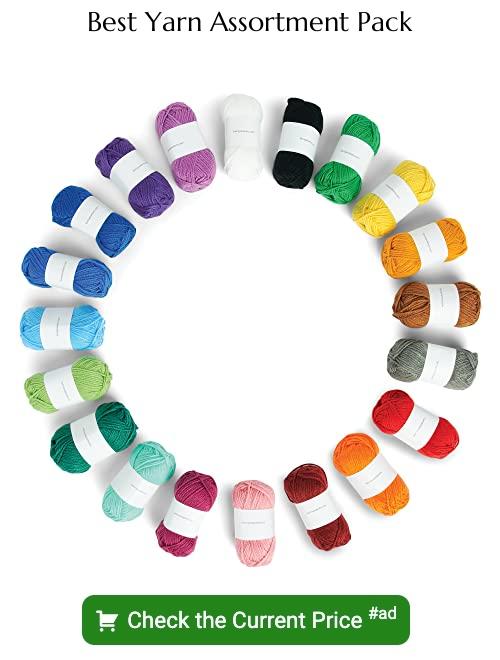Discover the fascinating world of yarn structures as we unravel various types, enhancing your knitting and crocheting experience like never before.
Welcome, yarn enthusiasts! Today, we’re going to dive deep into the world of yarn structure. Have you ever wondered what makes one type of yarn different from another? It all comes down to the way it’s constructed.
From single ply to cable twist, there are a variety of structures that affect everything from the drape of your finished project to its durability. Understanding these structures can help you choose the perfect yarn for your next project and take your crafting skills to the next level.
So grab a cup of tea and get ready to explore the fascinating world of yarn construction!
Single Yarns
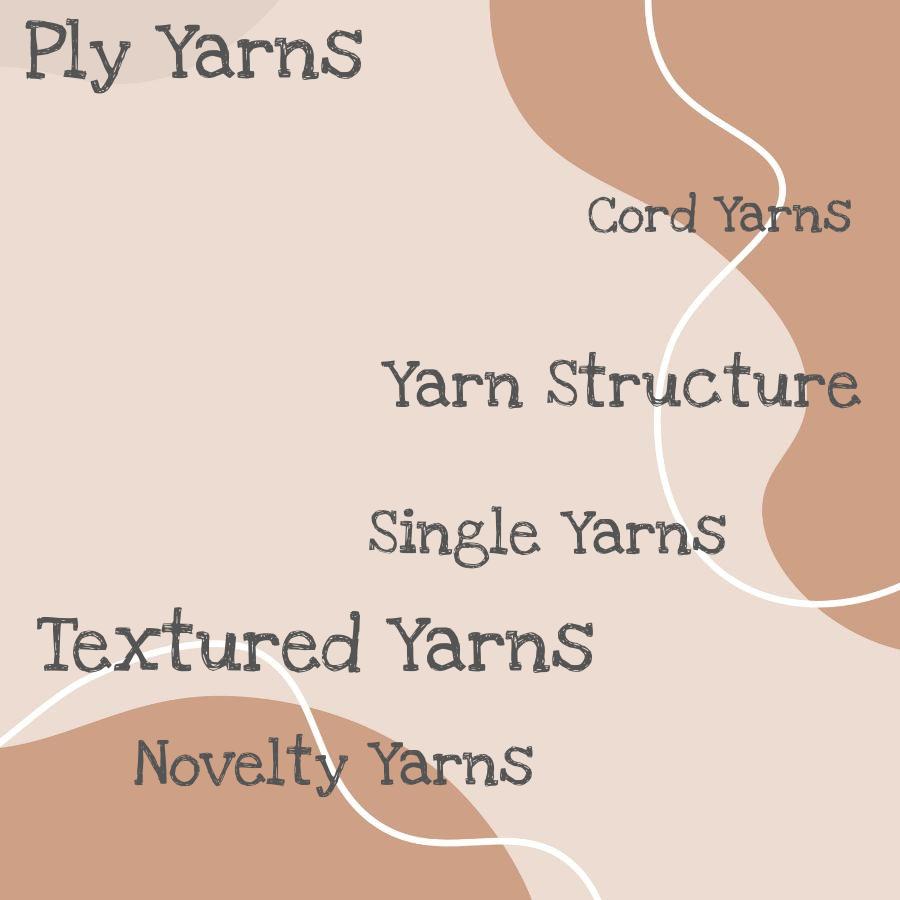
They can be made from a variety of fibers and come in different thicknesses, or weights. Single ply yarns tend to have a softer drape than plied yarns because they don’t have the added twist that comes with plying multiple strands together.
While single ply may not be as durable as other types of structures, it’s perfect for lightweight garments like shawls and scarves where softness is key. It also works well for lace patterns since it allows intricate details to shine through without being obscured by too much texture.
When working with single ply yarns, keep in mind that they can be more prone to splitting than plied or cabled varieties due to their lack of twist. However, this shouldn’t deter you from using them! Just take care when inserting your hook or needle into each stitch and work slowly if necessary.
Ply Yarns
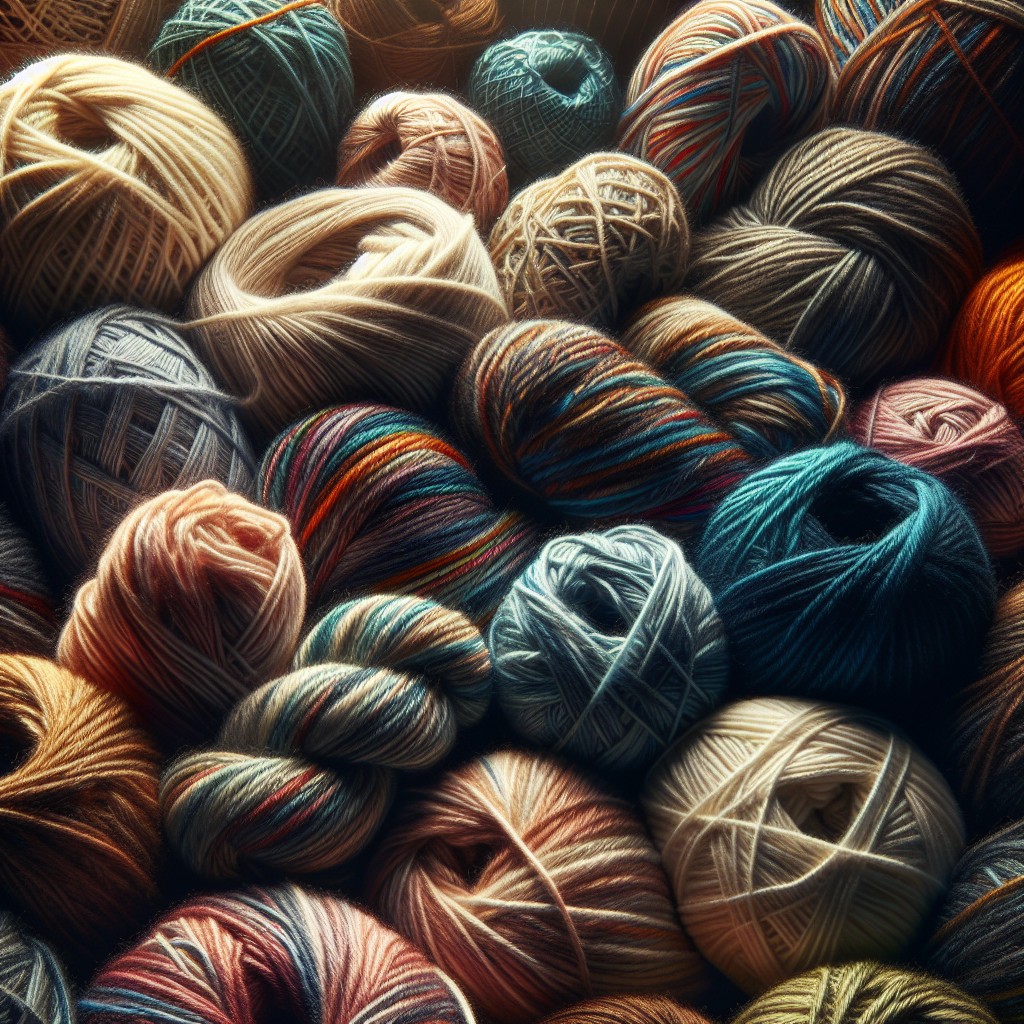
The resulting ply is thicker and stronger than the individual strands, making it a popular choice for many knitting and crocheting projects. Ply yarns can be classified based on the number of strands used to create them, with 2-ply being the most common.
The number of plies in a yarn affects its weight, texture, and drape. For example, a 2-ply fingering weight yarn will be lighter and have more drape than an 8-ply worsted weight yarn which will be heavier but also sturdier.
When choosing ply count for your project consider what you want to achieve with your finished product; do you want something lightweight or heavy? Do you need it to hold up well over time? These factors should guide your decision when selecting from different types of ply structures available in stores today.
Understanding how different types of plied structures affect our projects is essential knowledge that every knitter/crocheter should possess.
Cord Yarns
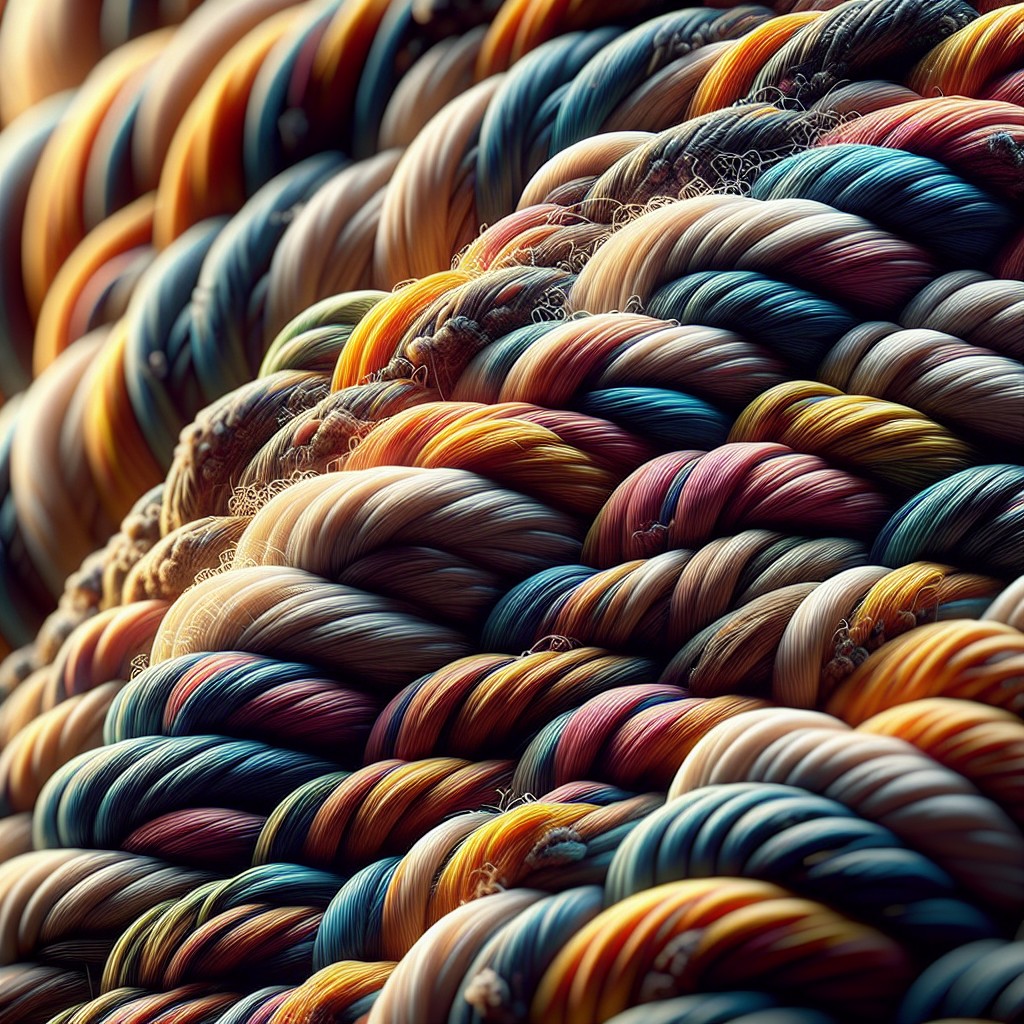
The resulting cord is thicker and stronger than single-ply or even ply yarns, making it ideal for projects that require durability such as bags, rugs, and home decor items. Cord yarns can be twisted tightly to create a dense fabric with excellent stitch definition or loosely to produce an airy texture.
One of the most popular types of cord yarn is cable twist. This structure involves twisting two plies together in one direction before plying them again in the opposite direction.
The result is a sturdy rope-like cord with excellent stitch definition that’s perfect for cables and other textured stitches.
Another type of cord yarn is boucle which features loops along its length giving it an interesting texture when knitted up into fabrics like scarves and shawls.
Novelty Yarns

These types of yarns come in a variety of unique textures, colors, and fibers that can make any project stand out. Some popular novelty yarns include boucle, eyelash, ribbon, ladder or trellis yarn.
Boucle is a type of novelty yarn with loops that create an interesting texture when knitted or crocheted. Eyelash is another popular novelty option with long strands resembling eyelashes for added fluffiness.
Ribbon and ladder/trellis are flat ribbons woven into the fiber creating open spaces between them which give the finished product an airy feel while adding visual interest.
When working with these types of specialty fibers it’s important to keep in mind their unique characteristics such as difficulty maintaining stitch definition due to their irregular shapes or thicknesses; however they can be used alone for simple designs like scarves where you want the focus on its uniqueness rather than intricate patterns.
Textured Yarns
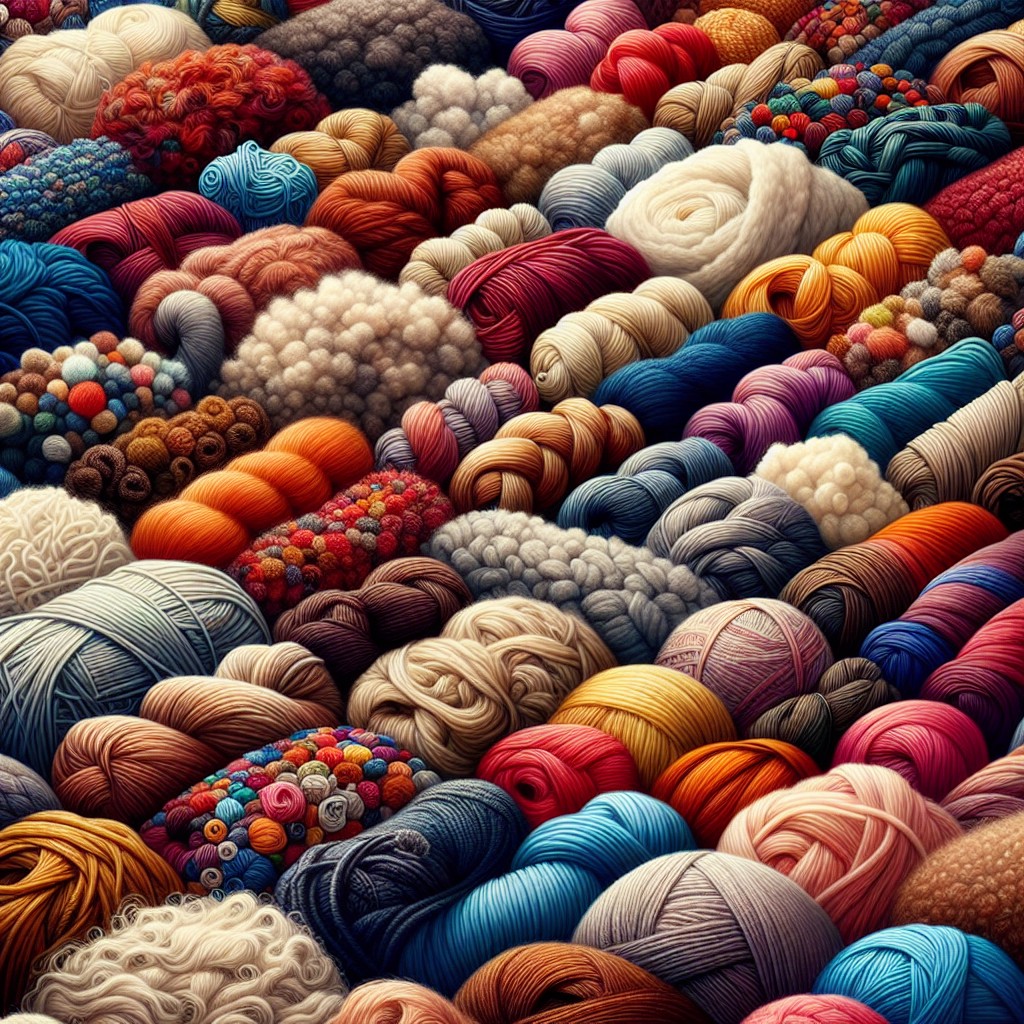
These types of yarns can be created through various methods, including twisting, looping, or knotting the fibers during production. The result is a unique texture that adds dimension and character to your finished piece.
Some common textured yarns include boucle, which features loops of fiber that create a bumpy surface; chenille, which has short lengths of velvety pile protruding from the main strand; and slub yarns with thick-and-thin sections throughout.
When working with textured yarns in knitting or crocheting projects it’s important to keep in mind their unique characteristics. They may require different needle sizes than smooth-textured options due to their bulkiness or unevenness.
Some textures may obscure stitch patterns so it’s best used for simple designs where its texture can shine through.
Stretch Yarns
These fibers give the yarn its stretchy properties, making it perfect for projects that require a snug fit or need to retain their shape over time. Stretchy socks and gloves are great examples of items made with stretch yarns.
When working with stretch yarns, it’s important to keep in mind that they can be more challenging to work with than traditional non-stretchy options. The elasticity can make it difficult to maintain consistent tension while knitting or crocheting, which may result in uneven stitches.
Metallic Yarns
These yarns contain metallic fibers, which can be made from materials such as aluminum, copper, or gold. The metallic fibers are often wrapped around another fiber to create the final product.
One thing to keep in mind when working with metallic yarn is that it can be more difficult to work with than other types of yarn due to its slippery nature. It’s important not to pull too tightly on the stitches and use needles or hooks appropriate for the thickness of your chosen metallic thread.
Despite this challenge, using these shiny threads in your knitting and crocheting projects will add an extra dimension that catches light beautifully and makes them stand out from ordinary ones. Metallic threads come in different colors so you have plenty options available depending on what you want: silver adds elegance while gold brings warmth; bronze gives off vintage vibes while black creates contrast against lighter shades.
Classification Based On Number of Strands
Yarns can be made up of a single strand or multiple strands twisted together. Single-strand yarns are often used for delicate projects, while multi-strand yarns are more durable and better suited for heavier items like blankets and sweaters.
Two-ply yarn is one of the most common types of multi-strand construction, consisting of two individual strands twisted together. Three-ply and four-ply constructions also exist, with each additional ply adding strength to the finished product.
When choosing a type of yarn structure based on its number of strands, consider both your project’s intended use as well as your personal preferences in terms drape and texture. With so many options available in this category alone, you’re sure to find just what you need!
FAQ
What are the 3 major yarn categories?
The 3 major yarn categories are Animal Fibers, Plant Fibers, and Synthetic Fibers.
What are yarn structures?
Yarn structures refer to the different types of yarns, including Spun Yarns (made from staple fibers), Filament Yarns (from continuous filament fibers), Core-Spun Yarns (multi-component yarns), and Monofilament or Multifilament Yarns.
What are the classification of yarn according to their structure?
Yarns can be classified according to their structure as single (one-ply), ply (plied or folded), and cord (including cable and hawser types).
What factors influence yarn strength and quality in different yarn structures?
Influential factors on yarn strength and quality in different yarn structures include fiber type, fiber length, twist level, spinning process, and yarn count.
How do various yarn structures impact the overall texture and appearance of a fabric?
Various yarn structures impact the overall texture and appearance of a fabric by affecting its density, elasticity, and surface finish, resulting in diverse tactile and visual properties.
What are some common applications for different yarn structures in the textile industry?
Single yarns are used for knitting and weaving, while ply yarns provide strength and durability in ropes, cords, and heavy fabrics.
